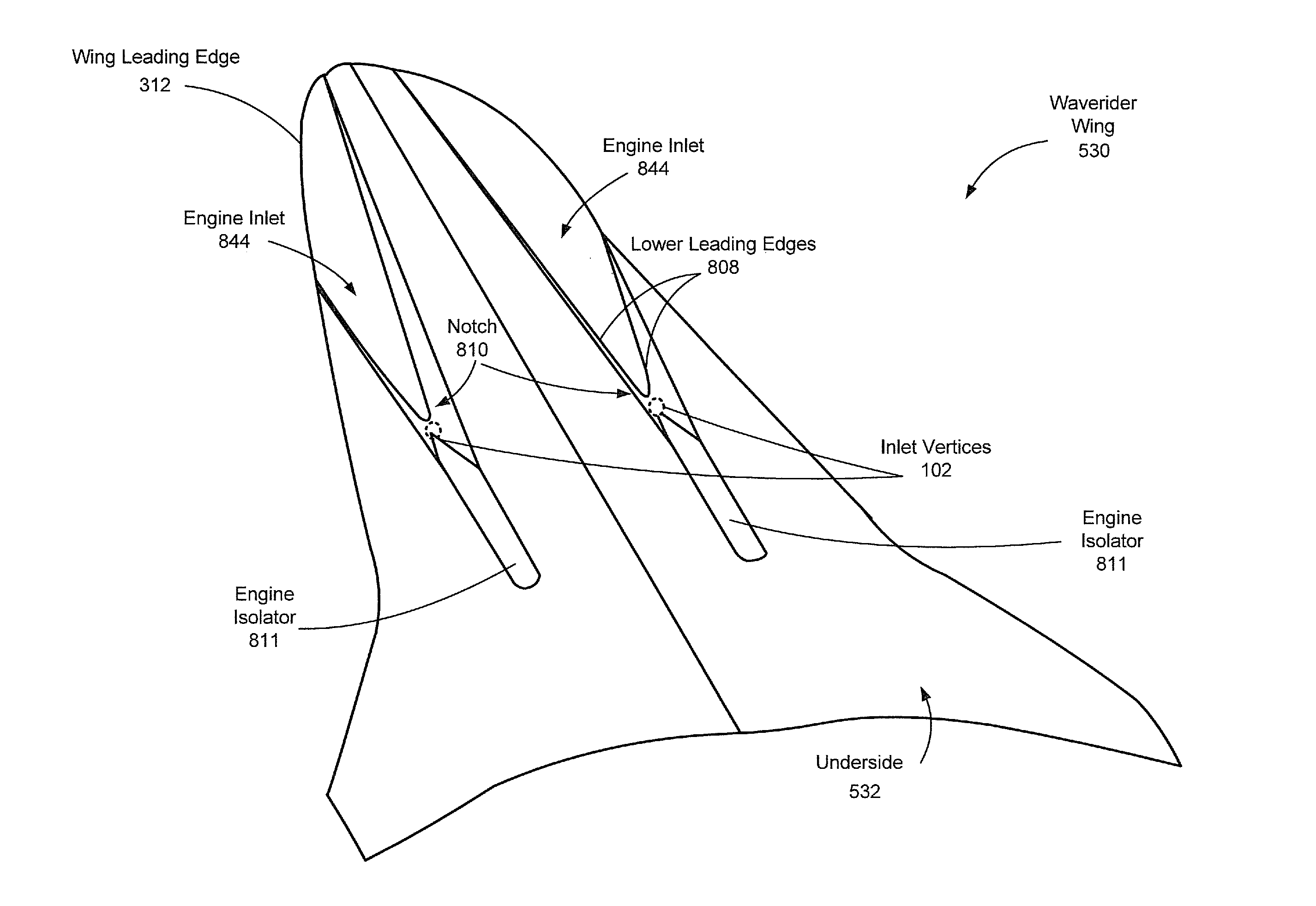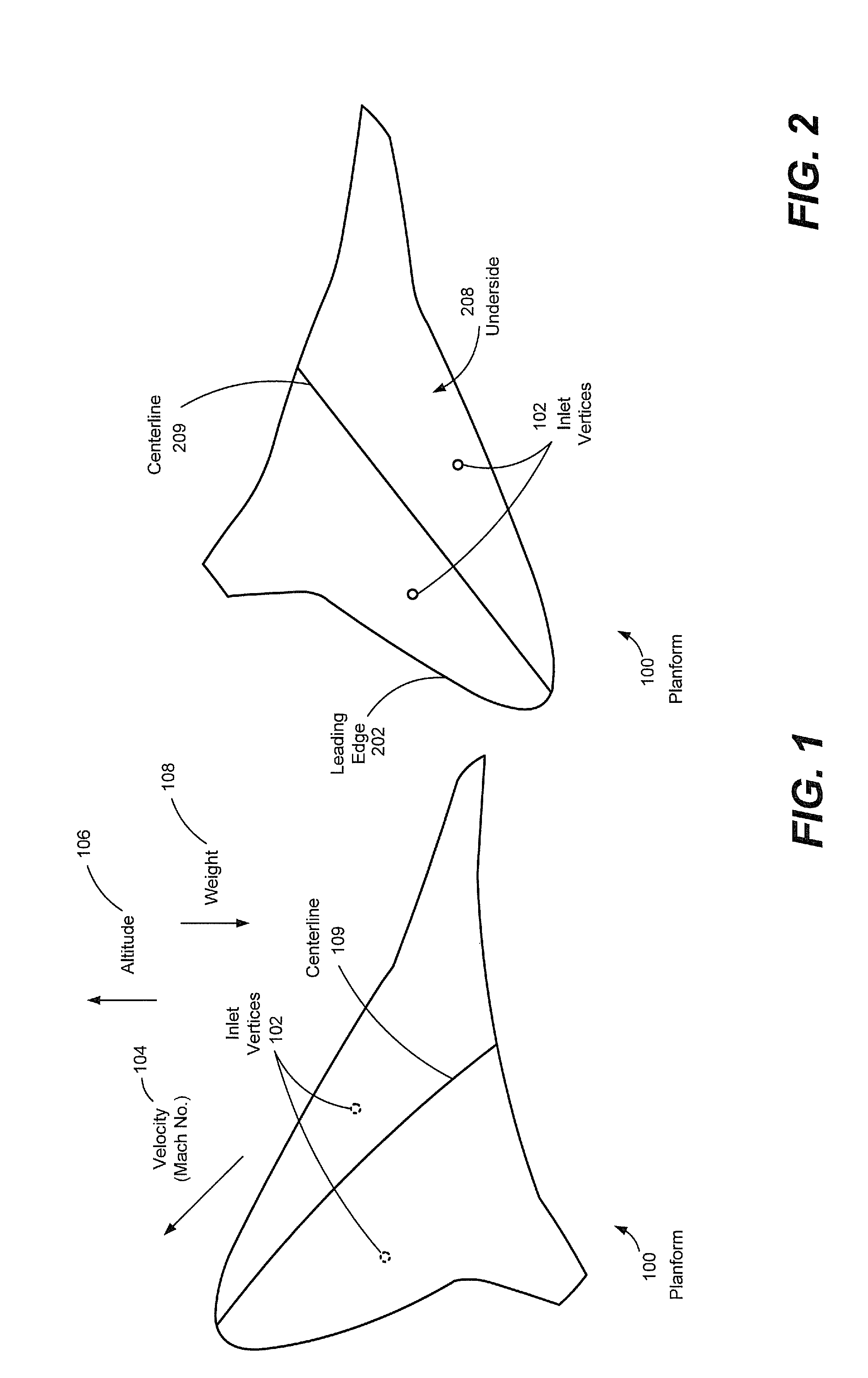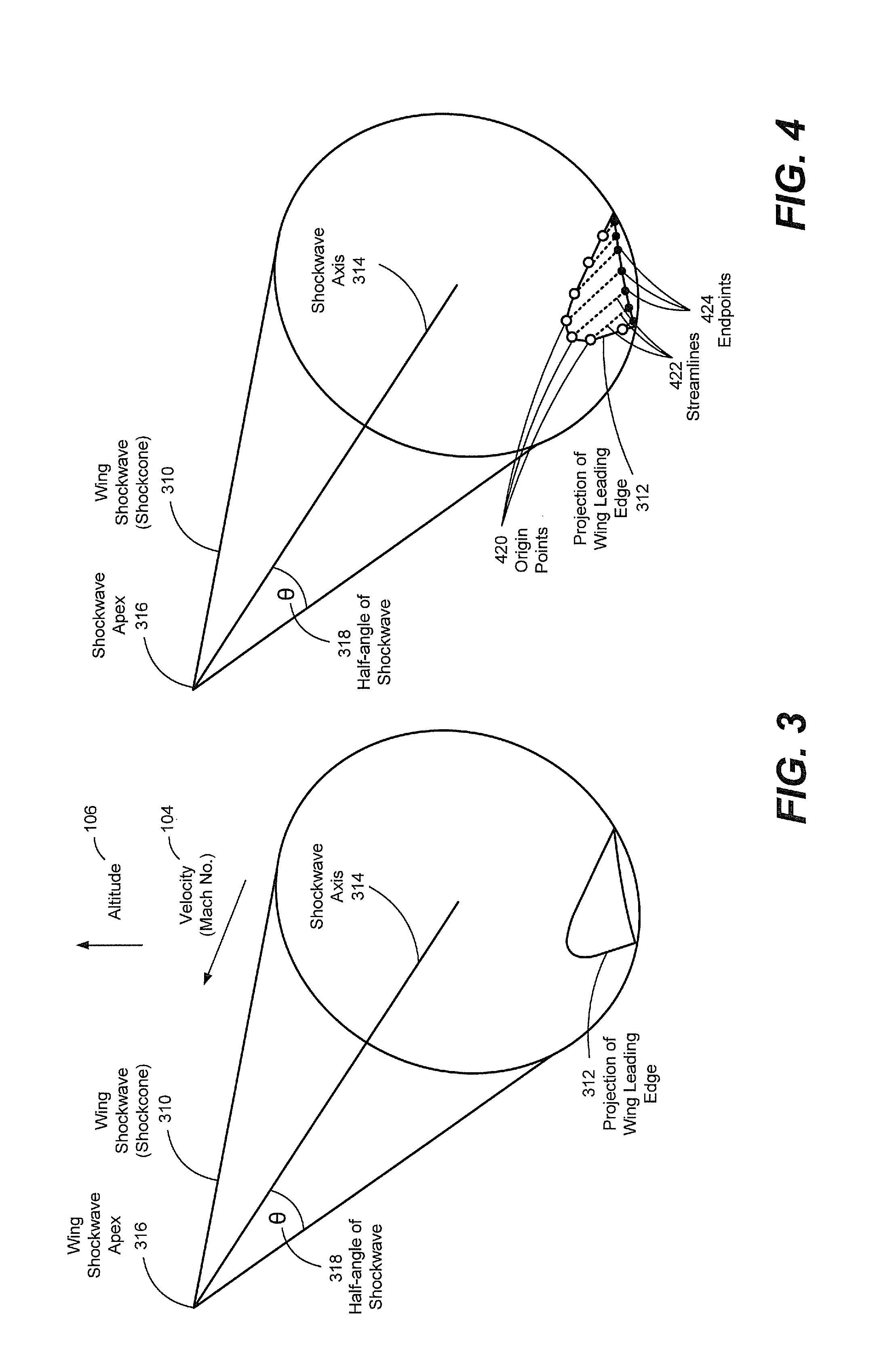Integrated hypersonic inlet design
a hypersonic inlet and design technology, applied in the direction of machines/engines, aircraft navigation control, transportation and packaging, etc., can solve the problems of reducing engine performance, reducing engine efficiency, and affecting the shape of the inlet for scramjets or other propulsion, so as to improve the efficiency of the aircraft
- Summary
- Abstract
- Description
- Claims
- Application Information
AI Technical Summary
Benefits of technology
Problems solved by technology
Method used
Image
Examples
Embodiment Construction
[0031]Methods, aircraft, and engine nacelles are disclosed in accordance with particular embodiments of integrated hypersonic inlet design. According to a particular illustrative embodiment, a waverider wing may be formed from a planform with engine inlets integrated therewith to form a hypersonic aircraft. The waverider wing and the engine inlets may ride on a wing shockwave of the waverider wing during operation. According to another particular embodiment, given an existing planform, one or more engine inlets and engine nacelles may be designed for the waverider wing to enable the waverider wing and the engine inlets to ride on the wing shockwave. A shape of the engine inlets may be shaped by determining points of intersection of the wing shockwave and one or more inlet shockwaves produced by the engine inlets. Streamline tracing may be used to form an inner shape of the engine inlets between a leading edge of each engine inlet and an intake of the associated engine. Streamline tr...
PUM
 Login to View More
Login to View More Abstract
Description
Claims
Application Information
 Login to View More
Login to View More - R&D
- Intellectual Property
- Life Sciences
- Materials
- Tech Scout
- Unparalleled Data Quality
- Higher Quality Content
- 60% Fewer Hallucinations
Browse by: Latest US Patents, China's latest patents, Technical Efficacy Thesaurus, Application Domain, Technology Topic, Popular Technical Reports.
© 2025 PatSnap. All rights reserved.Legal|Privacy policy|Modern Slavery Act Transparency Statement|Sitemap|About US| Contact US: help@patsnap.com



